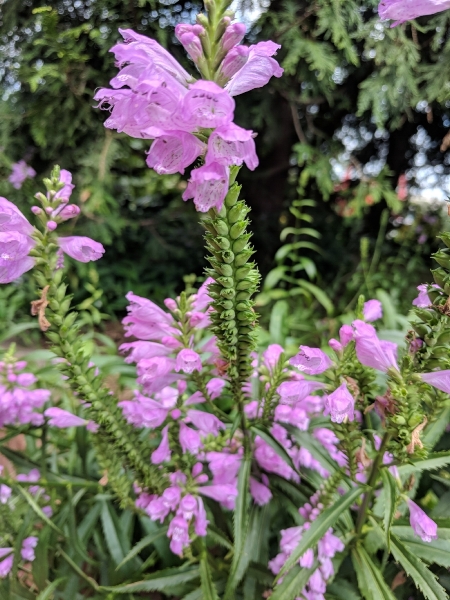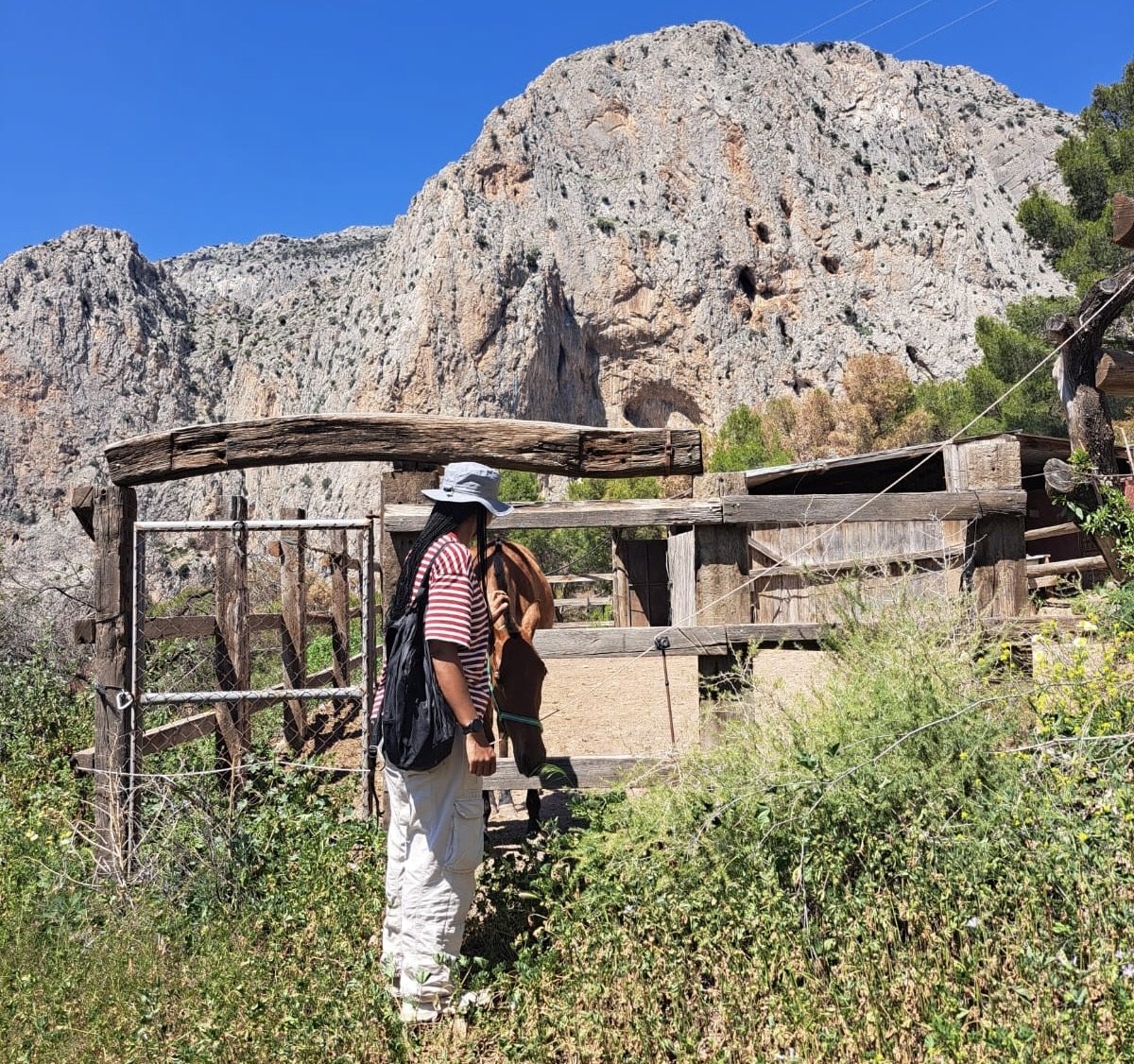What Black Women Know About Nature: The Color Purple Revisited
In her 1974 essay, “In Search of Our Mothers’ Gardens: The Creativity of Black Women in the South,” Alice Walker recounts her mother’s unique genius:
Whatever she planted grew as if by magic, and her fame as a grower of flowers spread over three counties. Because of her creativity with her flowers, even my memories of poverty are seen through a screen of blooms--sunflowers, petunias, roses, dahlias, forsythia, spirea, delphiniums, verbena...and on and on.
And I remember people coming to my mother’s yard to be given cuttings from her flowers; I hear again the praise showered on her because whatever rocky soil she landed on, she turned into a garden. A garden so brilliant with colors, so original in its design, so magnificent with life and creativity, that to this day people drive by our house in Georgia--perfect strangers and imperfect strangers--and ask to stand or walk among my mother’s art.
Walker shares this aspect of her mother’s life as a way of establishing her personal genealogy as a black woman artist and to understand what creative outlets were available to poor black women of earlier generations. The garden was her mother’s canvas. But I am interested in what this passage tells us us about the role that nature played in the lives of black women. Just as Alice Walker seeks to understand the history of black women’s artistic expression, I have lately felt a deep desire to establish a genealogy of black people’s relationship to and reverence for nature.
Sometimes discourse about diversity in the outdoors has the ring of exceptional-ism to it. Because we so rarely see other people of color engaged in our outdoor activity of choice, we can fall into this trap of imagining ourselves to be pioneers of a sort. But I believe there is a history to all things. A story that explains why things are the way they are—or why we believe them to be. Even our invisibility has a history. Like Walker, I am not content with the idea of being some kind of racial anomaly. I refuse to believe that my passion for nature is something that necessarily makes me a new version of black person. Just because our ancestors couldn’t record their inner lives and feelings during the centuries when most were not allowed access to pen and paper does not mean that I am the first of my lineage to marvel at the full moon, at the flutter of a flock of butterflies, the bee drunk on pollen, or the shadowy backdrop of mountains at dusk.
Up until recently, I would have assumed that Alice Walker’s novel The Color Purple needed very little introduction. After all, the book is over thirty-five years old and been adapted into a Steven Spielberg movie and a Broadway show. But in spite of its continued visibility in in pop culture--thanks to the musical adaptation and the Unwritten Encyclopedia of Cultural References That Only Black People Understand (“I loooves Harpo. God knows I do…”)--it has recently come to my attention that there are people out there who have never actually read the book...or even know it’s a book--one for which Walker became the first black woman to win a Pulitzer Prize for Fiction.
For those who haven’t read it: The Color Purple is what is called an epistolary novel--one written in the form of letters first to God and then when faith in God shifts, to a long-lost sister. The main character is Celie, who we meet as a teenager and follow through life into middle age. Through Celie’s letters, Walker casts a spotlight on the lives of rural black women in the early twentieth century, the ways that gender oppression and racism conspired to limit their freedom, and how they found solace and redemption in unconditional love, forgiveness, and nature.
Bookish teenager that I was, I went through a major Alice Walker phase toward the end of my high school years. I practically inhaled all of her novels, poetry, and essays. She was my introduction to womanism/feminism, to the possibility of romantic love between women, and to the plain and simple courage of being an outsider, no matter the stakes. But at the time, her ruminations on the holiness of nature were little more than abstractions to me. I had yet to experience anything recognizably spiritual in the outdoors. But recently, I decided to re-read The Color Purple as an adult with a far deeper relationship to nature than I had at fifteen. And it seems as a good place as any for starting to establish a lineage of black writing about and relationship to the natural world.
After a major turning point in Celie’s story, she dismisses God as a man who “act just like all the other mens I know. Trifling, forgitful, and lowdown.” Her lover Shug Avery tries to convince her that God is not a white man but is instead an It found in everything that is and ever will be:
….Listen, God love everything you love--and a mess of stuff you don’t. But more than anything else, God love admiration.
You saying God vain? I ast.
Naw, she say. Not vain, just wanting to share a good thing. I think it pisses God off if you walk by the color purple in a field somewhere and don’t notice it.
What it do when it pissed off? I ast.
Oh, it make something else. People think pleasing God is all God care about. But any fool living in the world can see it always trying to please us back…..
Trying to chase that old white man out of my head. I been so busy thinking bout him I never truly notice nothing God make. Not a blade of corn (how it do that?) not the color purple (where it come from?). Not the little wildflowers. Nothing.
Man corrupt everything, say Shug. He on your box of grits, in your head, and all over the radio. He try to make you think he everywhere. Soon as you think he everywhere, you think he God. But he ain’t. Whenever you trying to pray, and man plop himself on the other end of it, tell him to git lost, say Shug. Conjure up flowers, wind, water, a big rock.
What is it that we lovers of outdoor adventure can learn from Shug Avery’s theology of the natural world?
We can learn to pay attention to the small details, not just the epic landscapes. We can learn that if we’re so busy bagging miles and peaks that we don’t stop to notice and admire where we are--we might as well be at the gym. We can learn that greeting flowers by name is an offering to the universe. Lingering at the top of the trailhead to catch your breath and meditate on the view is a kind of worship. And if you don’t make the time to enjoy the show that it is putting on for you, you’re probably pissing it off. And finally we can learn that we do not have to be conquering anything—not a trail, not a river, or a rock wall—to have a relationship with nature. We don’t have to go any further than our backyards or the park across the street. All it takes is a quiet moment of admiration of a plant in bloom.


















We kicked off from the South Kaibab Trailhead at 4:30 AM, in the dark, our headlamps lighting the way. The morning was cool—perfect hiking weather—and the sky was just starting to hint at the sunrise. The trail drops fast, and within minutes we weaved our way down steep switchbacks, passing early-bird day hikers and the occasional runner already charging uphill.